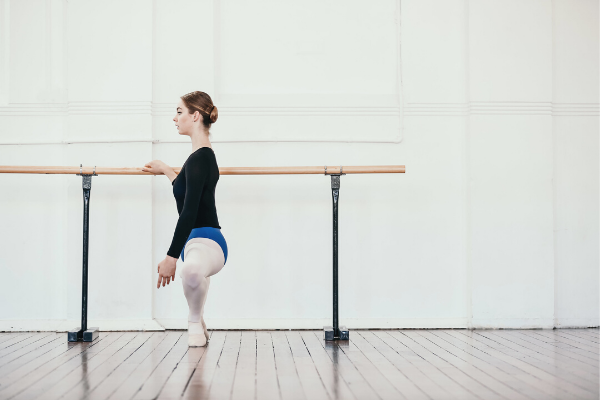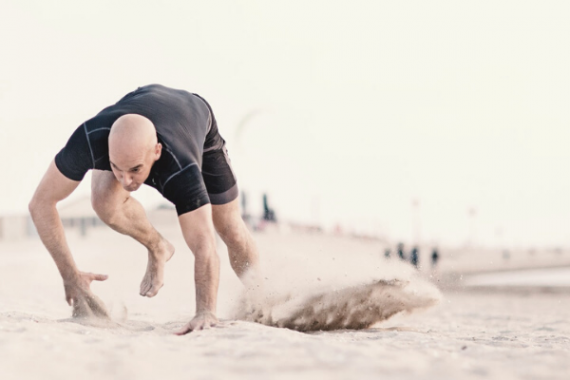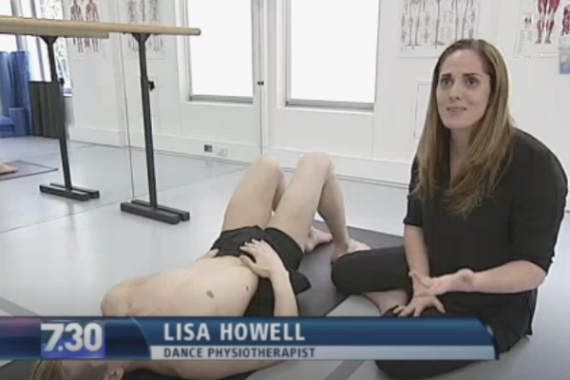If we look at turnout devant, this is a really interesting position. A lot of people have way more range in this position than they realise. However, the most interesting thing is the number of different structures that can be limiting range devant. Some dancers experience pinching in the front of the hip, others feel a stretch in the back of the hip, others may feel pain coming down to the knee. We need to work very carefully on safely improving your range of motion if needed, but often it is more of a case of learning how to control the range you already have.
When assessing a dancer’s range in second, many people have more range in the joints than they think. Often range is being blocked by excessive tone on the gluteals, resulting from attempts to muscle their way into turnout but inadvertently using the wrong muscles.
In an arabesque, the hip has to sit in quite a different place in the socket than all of the other ranges of turnout. Placement in arabesque is also dependent on very fine muscle control through the whole backline, rather than just in the hip
In summary, if you want better turnout:
- Chances are you have a whole lot more than you realise!
- Keep in mind that some soft tissue work (massage) by a trained professional can really help in opening out your hips to their full capacity
- It is essential that we work out exactly what your restriction is, and safe ways of improving it
- We also need to work out why those structures are holding on so tightly in the first place! Are there underlying weaknesses that need to be worked on first? This strategy ensures that you can continually get better over time, rather than complaining of tension in the same areas constantly.
Remember that pushing in the direction you want to go is often the slowest and most dangerous way of getting there. We need to work smarter, not harder, when working on your turnout!
Turnout Resources
If you are looking to delve deeper into this topic, check out the following programs:
- Tips for Turnout: This ‘Tips for Turnout Guide’ is a great starting point for anyone wanting to learn more about how to maximise turnout safely, and is the first resource in our Training Turnout Series. It gives you tips on improving your range, developing control of your standing leg and specific ways to increase the height of your développé devant.
- Training Turnout: Deepen your exploration of the anatomy of the dancers’ hip with this unique Training Turnout eBook. As the second resource in our Training Turnout series this program is a great follow on from our Tips for Turnout Program. Learn how to assess and understand the structure of your own hips, strengthen standing leg turnout and turnout en fondu as well as develop extraordinary control in your adage.
- Training Turnout in Tiny Dancers: If you are a dance teacher, this is the perfect continued education course for you. In this systematic and comprehensive approach to training turnout in tiny dancers, Lisa and Beverly provide dance teachers with direct techniques to use in class to safely develop optimal range and control of motion in all dance students. This program begins by establishing strength and control in parallel, before adding on the control of rotation, which is hugely important in the long term health of dancers’ hips. Using elements of fun and creative play to bring scientific and detailed training programs into dance schools is a unique and effective way to help thousands of young students worldwide.








